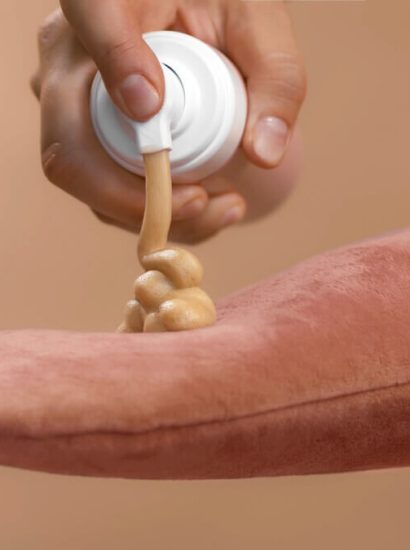Facial redness can be a frustrating skin concern caused by sensitivity, rosacea, inflammation, or environmental factors. Choosing the right serum is a game-changer for calming irritation, strengthening the skin barrier, and reducing redness. This guide explores the best serums for redness, their key ingredients, and tips for incorporating them into your skincare routine.
What Causes Redness in Skin?
Common Triggers:
- Sensitive Skin: Reactivity to skincare products or allergens.
- Rosacea: A chronic condition causing persistent redness.
- Environmental Factors: Sunburn, wind exposure, or extreme weather.
- Compromised Skin Barrier: Over-exfoliation or lack of hydration.
A targeted serum can address these issues with ingredients that calm, heal, and protect your skin.
Best Serums for Redness
Dr. Jart+ Cicapair Tiger Grass Serum
- Why It’s Great: Formulated with Centella Asiatica (Tiger Grass), this serum reduces inflammation and strengthens the skin barrier.
- Ideal For: Redness caused by rosacea or irritation.
- Price Range: Premium【290†source】【291†source】.
REN Clean Skincare Evercalm Anti-Redness Serum
- Why It’s Great: Contains milk proteins, antioxidants, and botanicals that soothe sensitive, reactive skin while reducing redness and irritation.
- Ideal For: Everyday use on sensitive skin.
- Price Range: Mid-tier【291†source】.
La Roche-Posay Toleriane Ultra Dermallergo Serum
- Why It’s Great: Packed with neurosensine and thermal spring water, it instantly soothes redness while hydrating and restoring balance.
- Ideal For: Allergy-prone skin.
- Price Range: Affordable【290†source】【291†source】.
Aveeno Calm + Restore Triple Oat Serum
- Why It’s Great: Oat extract and feverfew work together to calm inflamed skin and repair the skin barrier.
- Ideal For: Redness from dryness or sensitivity.
- Price Range: Budget-friendly【289†source】.
The Ordinary Azelaic Acid Suspension 10%
- Why It’s Great: Azelaic acid targets redness, uneven skin tone, and rosacea with anti-inflammatory and brightening properties.
- Ideal For: Mild to moderate redness.
- Price Range: Affordable【291†source】【290†source】.
Key Ingredients to Look for in Serums for Redness
- Centella Asiatica: Soothes inflammation and promotes healing.
- Niacinamide: Reduces redness, strengthens the skin barrier, and minimizes irritation.
- Ceramides: Helps restore the skin’s protective barrier.
- Azelaic Acid: Targets inflammation and uneven tone.
- Oat Extract: Calms sensitive, irritated skin.
How to Use a Redness-Reducing Serum
- Cleanse Gently
Use a mild, fragrance-free cleanser to prepare your skin without irritation.
- Apply Serum
After cleansing, apply a small amount of serum evenly across your face. Avoid rubbing—gently pat instead.
- Follow with Moisturizer
Seal in the serum with a hydrating, non-comedogenic moisturizer.
- Use Sunscreen
Protect your skin daily with a broad-spectrum SPF to prevent redness caused by UV rays.
Benefits of Using a Serum for Redness
- Targeted Treatment: Focuses on reducing inflammation and irritation.
- Hydration Boost: Many serums double as lightweight moisturizers.
- Barrier Repair: Strengthens the skin’s defense against environmental stressors.
- Improved Texture: Soothes redness while promoting a smoother, even-toned complexion.
Conclusion
The best serums for redness are those that address inflammation, repair the skin barrier, and provide soothing hydration. Whether you’re managing sensitive skin, rosacea, or redness from environmental factors, options like Dr. Jart+ Cicapair, REN Evercalm, and The Ordinary Azelaic Acid are excellent choices.
Incorporating the right serum into your skincare routine not only reduces redness but also restores your skin’s natural radiance. Choose one tailored to your skin’s needs, and enjoy the benefits of calmer, healthier skin.
FAQs
1. What is the best serum for sensitive, redness-prone skin?
The Dr. Jart+ Cicapair Tiger Grass Serum is a standout for its anti-inflammatory and soothing properties.
2. How long does it take for a serum to reduce redness?
Visible results often appear within 2–4 weeks of consistent use, depending on the severity of redness.
3. Can I use redness-reducing serums daily?
Yes, most serums are gentle enough for daily use. Always follow the product’s instructions.
4. Are there budget-friendly serums for redness?
Yes, options like Aveeno Calm + Restore Triple Oat Serum and The Ordinary Azelaic Acid are effective and affordable.
5. What should I avoid in serums for redness?
Avoid alcohol, fragrances, and harsh exfoliants, as they can worsen redness and irritation.
Also read: Sensitive Face Products: Top Solutions for Gentle Skin Care





